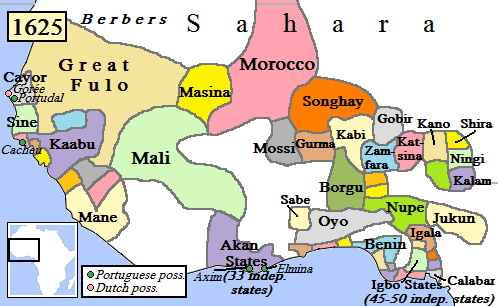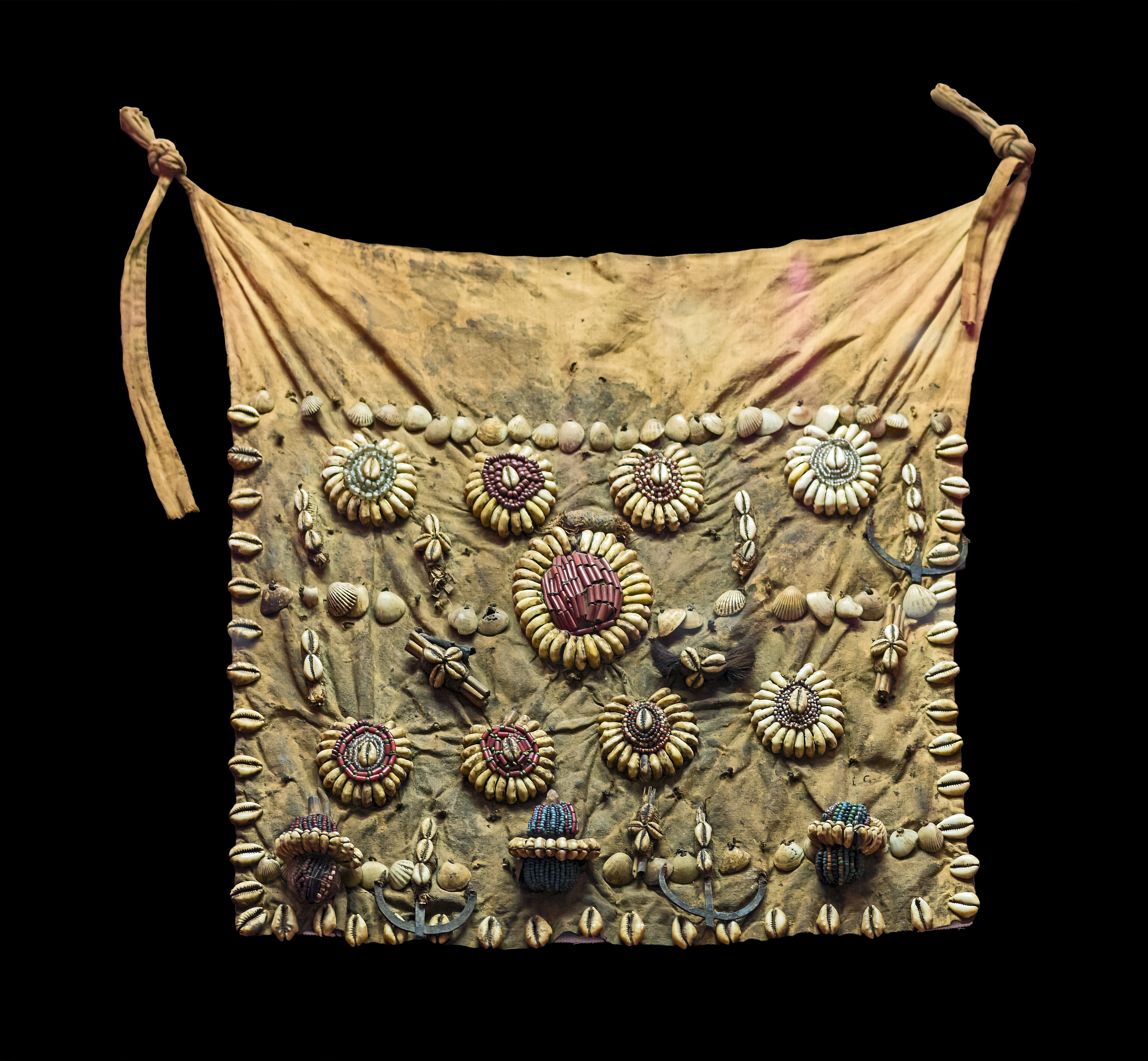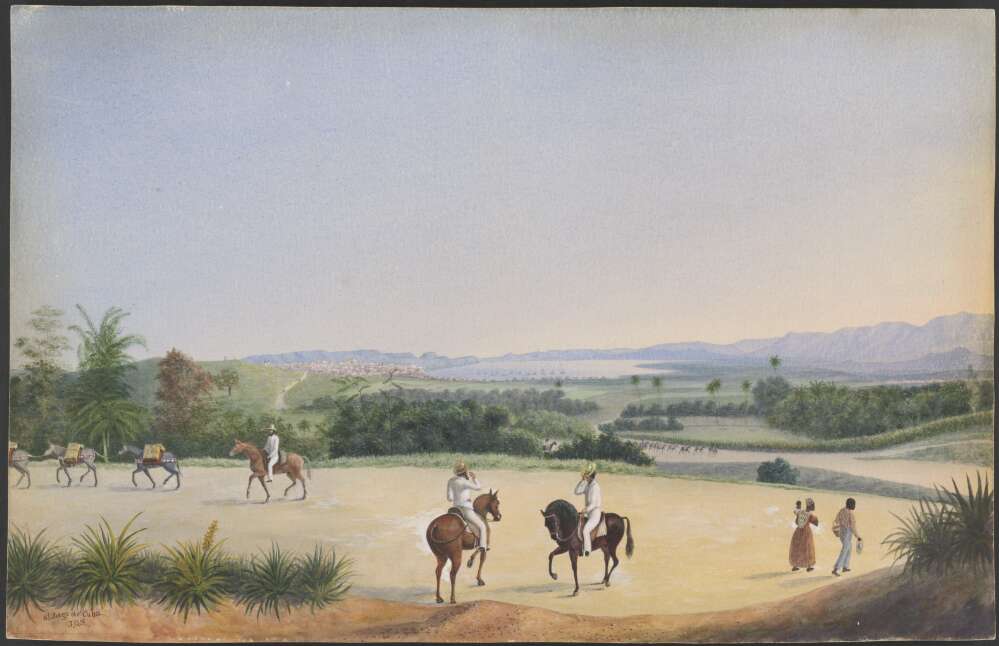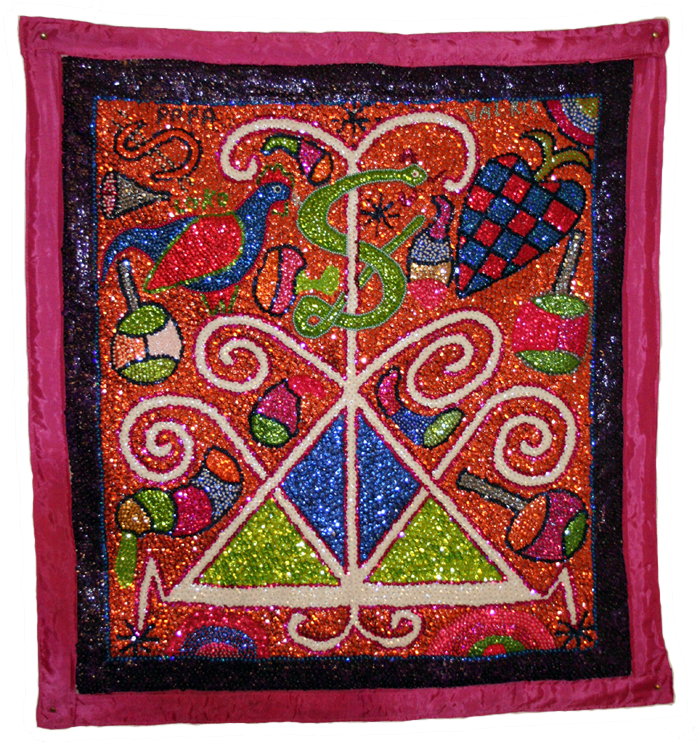|
Arará
The Arará people form an Afro-Cuban ethnoreligious group descended from the Dahomey kingdom of West Africa, and retaining an identity, religion, and culture separate from those of other Afro-Cuban peoples. Although, historically, the Arará people have been staunch defenders of their separate heritage and religion, this distinct identity - while it still persists - has, over time, become increasingly blurred and harder to maintain. History Origins The Arará were originally enslaved as prisoners-of-war in the invasions of Dahomey by the Oyo Empire. Years after enslavement and transport to Cuba, Yoruba slaves descendant from the Oyo Empire began to arrive in Cuba. Due to the pre-existing tensions in West Africa these two groups remained socially distant and developed separate cultures and identities. Despite close similarities in their religious practices both groups retained separate priesthoods. It was not until the early 1900s that Arará and Yoruba Cubans became sufficiently ... [...More Info...] [...Related Items...] OR: [Wikipedia] [Google] [Baidu] |
Afro-Cuban
Afro-Cubans or Black Cubans are Cubans of West African ancestry. The term ''Afro-Cuban'' can also refer to historical or cultural elements in Cuba thought to emanate from this community and the combining of native African and other cultural elements found in Cuban society such as race, religion, music, language, the arts and class culture. Demographics According to a 2012 national census which surveyed 11.2 million Cubans, 1 million Cubans described themselves as Afro-Cuban or Black, while 3 million considered themselves to be "mulatto" or "mestizo". Thus a significant proportion of those living on the island affirm some African ancestry. Although, there has been much discussion over the actual demographic composition of the island. While the 2012 national census showed that only 11% of Cubans reported themselves to be Afro-Cuban or Black, most international sources and independent studies have shown the proportion of Cubans who are black, or possess significant African genetic ... [...More Info...] [...Related Items...] OR: [Wikipedia] [Google] [Baidu] |
Ethnoreligious Group
An ethnoreligious group (or an ethno-religious group) is a grouping of people who are unified by a common religious and ethnic background. Furthermore, the term ethno-religious group, along with ethno-regional and ethno-linguistic groups, is a sub-category of ethnicity and is used as evidence of belief in a common culture and ancestry. In a narrower sense, they refer to groups whose religious and ethnic traditions are historically linked. Characteristics The elements that are defined as characteristics of an ethnoreligious group are "social character, historical experience, and theological beliefs". A closing of the community takes place through a strict endogamy, which is specifically for the community and that distinguishes an ethno-religious community, that is, as distinct from any other group. Defining an ethnoreligious group In general, ethnoreligious communities define their ethnic identity not only by ancestral heritage nor simply by religious affiliation but norm ... [...More Info...] [...Related Items...] OR: [Wikipedia] [Google] [Baidu] |
Dahomey
The Kingdom of Dahomey () was a West African kingdom located within present-day Benin that existed from approximately 1600 until 1904. Dahomey developed on the Abomey Plateau amongst the Fon people in the early 17th century and became a regional power in the 18th century by expanding south to conquer key cities like Whydah belonging to the Kingdom of Whydah on the Atlantic coast which granted it unhindered access to the tricontinental triangular trade. For much of the middle 19th century, the Kingdom of Dahomey became a key regional state, after eventually ending tributary status to the Oyo Empire. European visitors extensively documented the kingdom, and it became one of the most familiar African nations to Europeans. The Kingdom of Dahomey was an important regional power that had an organized domestic economy built on conquest and slave labor, significant international trade and diplomatic relations with Europeans, a centralized administration, taxation systems, and an organ ... [...More Info...] [...Related Items...] OR: [Wikipedia] [Google] [Baidu] |
Oyo Empire
The Oyo Empire was a powerful Yoruba empire of West Africa made up of parts of present-day eastern Benin and western Nigeria (including Southwest zone and the western half of Northcentral zone). It grew to become the largest Yoruba language, Yoruba-speaking state and rose through the outstanding organizational and administrative skills of the Yoruba people, wealth gained from trade, and a powerful cavalry. The Oyo State, Oyo Empire was one of the most politically important states in the entirety of Western Africa from the mid-17th to the late 18th century, and held sway not only over most of the other kingdoms in Yorubaland, but also over nearby African states, notably the Fon people, Fon Kingdom of Dahomey in the modern Republic of Benin on its west. History Legend of origin The origins of the Oyo Empire lie with Oranyan (also known as Oranmiyan), the last prince of the Yoruba Kingdom of Ile-Ife (Ife). Oranmiyan made an agreement with his brother to launch a punitive raid o ... [...More Info...] [...Related Items...] OR: [Wikipedia] [Google] [Baidu] |
Ewe People
The Ewe people (; ee, Eʋeawó, lit. "Ewe people"; or ''Mono Kple Volta Tɔ́sisiwo Dome'', lit. "Ewe nation","Eʋenyigba" Eweland;) are a Gbe-speaking ethnic group. The largest population of Ewe people is in Ghana (6.0 million), and the second largest population is in Togo (3.1 million). They speak the Ewe language ( ee, Eʋegbe) which belongs to the Gbe family of languages. They are related to other speakers of Gbe languages such as the Fon people, Fon, Gen language, Gen, Phla Phera, Gun, Maxi, and the Aja people of Togo, Benin and southwestern Nigeria. Demographics Ewe people are located primarily in the coastal regions of West Africa: in the region south and east of the Volta River to around the Mono River at the border of Togo and Benin; and in the southwestern part of Nigeria (close to the Atlantic Ocean, stretching from the Nigeria and Benin border to Epe). They are primarily found in the Volta Region in southeastern Ghana, southern Togo, in the southwestern part of Be ... [...More Info...] [...Related Items...] OR: [Wikipedia] [Google] [Baidu] |
Fon People
The Fon people, also called Fon nu, Agadja or Dahomey, are a Gbe ethnic group.Fon people Encyclopædia Britannica, undated, 1.7 million population, Retrieved June 29, 2019 They are the largest ethnic group in found particularly in its south region; they are also found in southwest and . Their total population is estimated to be about 3,500,000 people, and they speak the |
Yoruba People
The Yoruba people (, , ) are a West African ethnic group that mainly inhabit parts of Nigeria, Benin, and Togo. The areas of these countries primarily inhabited by Yoruba are often collectively referred to as Yorubaland. The Yoruba constitute more than 42 million people in Africa, are a few hundred thousand outside the continent, and bear further representation among members of the African diaspora. The vast majority of the Yoruba population is today within the country of Nigeria, where they make up 21% of the country's population according to CIA estimations, making them one of the largest List of ethnic groups of Africa, ethnic groups in Africa. Most Yoruba people speak the Yoruba language, which is the Niger–Congo languages, Niger-Congo language with the largest number of native or L1 speakers. In Africa, the Yoruba are contiguous with the Yoruboid languages, Yoruboid Itsekiri to the south-east in the northwest Niger Delta, Bariba people, Bariba to the northwest in Benin a ... [...More Info...] [...Related Items...] OR: [Wikipedia] [Google] [Baidu] |
Kongo Religion
Kongo religion (KiKongo: BuKongo) is a broad set of traditional beliefs from the KiKongo speaking peoples. The faith bases itself on a complex Animistic system and a Pantheon of various gods and spirits. The idea of a high god named Nzambi Mpungu who gave birth to all the other gods, the world and spirits who inhabit it, is common, but Ancestor worship builds up the main religious beliefs. Shamanly doctors, known as Nganga, try to mediate between the spirit realms and the physical world, as well as heal followers' minds and bodies. Mediatory roles like being a Nganga require legitimization from the other world of spirits and ancestors. The universe is split between two worlds, one of the living (nza yayi) and a world of the dead (nsi a bafwa), where spirits and gods exist, these worlds are split by a metaphorical body of water. History The traditional spirituality has its roots in Bantu speaking peoples in Africa. As the faith traveled to the Americas it retained various tradit ... [...More Info...] [...Related Items...] OR: [Wikipedia] [Google] [Baidu] |
Matanzas
Matanzas (Cuban ) is the capital of the Cuban province of Matanzas. Known for its poets, culture, and Afro-Cuban folklore, it is located on the northern shore of the island of Cuba, on the Bay of Matanzas (Spanish ''Bahia de Matanzas''), east of the capital Havana and west of the resort town of Varadero. Matanzas is called the ''City of Bridges'', for the seventeen bridges that cross the three rivers that traverse the city (Rio Yumuri, San Juan, and Canimar). For this reason it was referred to as the "Venice of Cuba." It was also called "La Atenas de Cuba" ("The Athens of Cuba") for its poets. Matanzas is known as the birthplace of the music and dance traditions danzón and rumba. History Matanzas was founded in 1693 as ''San Carlos y San Severino de Matanzas''. This followed a royal decree ("''real cédula''") issued on September 25, 1690, which decreed that the bay and port of Matanzas be settled by 30 families from the Canary Islands. Matanzas was one of the regi ... [...More Info...] [...Related Items...] OR: [Wikipedia] [Google] [Baidu] |
Santiago De Cuba
Santiago de Cuba is the second-largest city in Cuba and the capital city of Santiago de Cuba Province. It lies in the southeastern area of the island, some southeast of the Cuban capital of Havana. The municipality extends over , and contains the communities of Antonio Maceo, Bravo, Castillo Duany, Daiquirí, El Caney, El Cobre, El Cristo, Guilera, Leyte Vidal, Moncada and Siboney. Historically Santiago de Cuba was the second-most important city on the island after Havana, and remains the second-largest. It is on a bay connected to the Caribbean Sea and an important sea port. In the 2012 population census, the city of Santiago de Cuba recorded a population of 431,272 people. History Santiago de Cuba was the fifth village founded by Spanish conquistador Diego Velázquez de Cuéllar on July 25, 1515. The settlement was destroyed by fire in 1516, and was immediately rebuilt. This was the starting point of the expeditions led by Juan de Grijalba and Hernán Cortés to the ... [...More Info...] [...Related Items...] OR: [Wikipedia] [Google] [Baidu] |
Haitian Vodou
Haitian Vodou is an African diasporic religion that developed in Haiti between the 16th and 19th centuries. It arose through a process of syncretism between several traditional religions of West and Central Africa and Roman Catholicism. There is no central authority in control of the religion and much diversity exists among practitioners, who are known as Vodouists, Vodouisants, or Serviteurs. Vodou revolves around spirits known as '' lwa.'' Typically deriving their names and attributes from traditional West and Central African divinities, they are equated with Roman Catholic saints. The lwa divide up into different groups, the ''nanchon'' ("nations"), most notably the Rada and the Petwo. Various myths and stories are told about these lwa, which are regarded as subservient to a transcendent creator deity, Bondye. This theology has been labelled both monotheistic and polytheistic. An initiatory tradition, Vodouists usually meet to venerate the lwa in an ''ounfò'' (temple), run ... [...More Info...] [...Related Items...] OR: [Wikipedia] [Google] [Baidu] |





.jpg)

